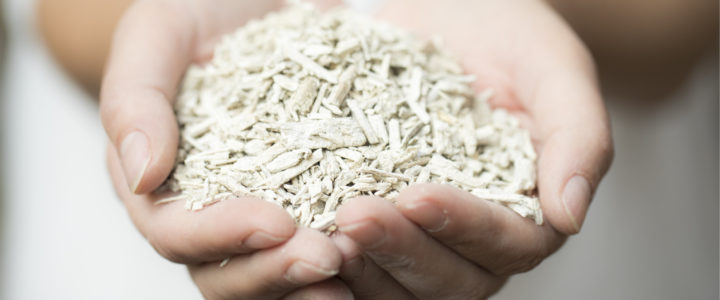
Despite its name drawing obvious comparisons to humanity’s most popular building material, hempcrete is not, in fact, a suitable substitute for concrete. Why would an alternative to concrete even be something we should discuss? Concrete has an extremely high carbon footprint and is the 2nd most consumed material on Earth after water. So any alternatives are going to be extremely important as we move towards existing more sustainably on our planet. Check out our previous piece on concrete to learn more.
But, today, let’s talk about what hempcrete really is and where it’s extremely useful as a sustainable building material.
It all starts from the hemp plant, which is related to cannabis, but with one important difference: very low levels of tetrahydrocannabinol (THC) – the psychoactive compound in cannabis, so hemp can’t be used to get ‘high’. There are uses for literally every single part of the plant – thousands of uses – from textiles to medicine to paper to food…and as a building material.

It’s one of the planet’s most efficient carbon sequesters, able to absorb 1.63 tons of CO2e for every ton grown; it’s one of the fastest growing plants on Earth, going from seed to maturity in 3-4 months and hence a full life cycle within one growing season; and it’s hardy, able to tolerate weather extremes and grow with very little water, making it suitable even in drought prone areas. It helps to improve the nitrogen balance of soil, so it doesn’t need fertilizers and makes a great rotation crop for winter cereals, priming the soil to higher quality. It has even been used to intentionally absorb toxins and heavy metals from soil, currently being used to this end in Chernobyl with further testing for possible use cases on the cards. It sends roots down deep, which helps keep the soil from eroding and simultaneously aerates it. It is sown with a no-till method, which cuts down on the emissions of carbon from ploughing (both related to disturbance of the soil itself and the machinery required). It is resistant to many pests and diseases, alleviating the need for pesticides – and simultaneously making it a great choice as a cover crop to reduce the need for pesticides for the main crop. It is also basically flood proof as it dries quickly, is mould resistant, and maintains its structure. And lastly, it’s fire-proof.
Suffice to say, it really does read like a wonder plant, right?! No wonder it’s been used throughout the ages, from 2800 BCE, right across the globe, and on industrial scale for decades in Europe and Australia.
But back to the building industry – how and where is it used? Hempcrete is a non-load bearing material which is made from combining the woody part of the stem, called hurd, with lime (often called the binding) and water. The hempcrete is very lightweight and doesn’t require heat for curing, so the embodied carbon of a building using hempcrete is low. The primary cure takes about 6 weeks, and the overall curing takes about 50 years to complete, in a process called carbonation…absorbing atmospheric carbon day in, day out! The limestone binding is energy and carbon intensive in production, but the hemp absorbs even more than this when installed. It can be grown locally to the processing plant (and arguably should be, as it’s readily grown pretty much anywhere), which is yet another way use of hempcrete lowers the embodied emissions of a building project.
So if it’s non-load bearing, what’s it for? Hempcrete can be used as an alternative to fibreglass insulation, sheet rock, and concrete insulation blocks. It has incredibly good thermoregulation properties. Adequate insulation in our homes is vital, not merely to stay comfortable but also to decrease energy use on both heating and cooling.
It can be produced in blocks, which slide and join together with ease, not requiring mortar, and can be installed 70% faster than building with traditional material, whether inside a dry wall or as an exterior wall. It can be used with a cast in place, or in situ, a technique where formwork is in place and the hempcrete fills the empty space and is lightly tamped down. More recently there’s been production of HempWool, which replaces traditional, often abrasive and irritating insulation panels for use in places like floors, ceilings, and partition walls, or even RVs, and can be retrofitted. It can also be used to produce countertops and cabinets, and as a plaster or sealant.
So despite hempcrete not being the golden ticket out of using carbon intensive concrete all together, the use cases do mean it’s an awesome alternative in certain situations. And as this material provides natural, safe, effective, carbon absorbing, sustainable insulation, that’s great news environmentally. Thankfully, regulations in the US have recently caught up with the rest of the world regarding allowing this crop, the so-called wonder crop, to be grown.



